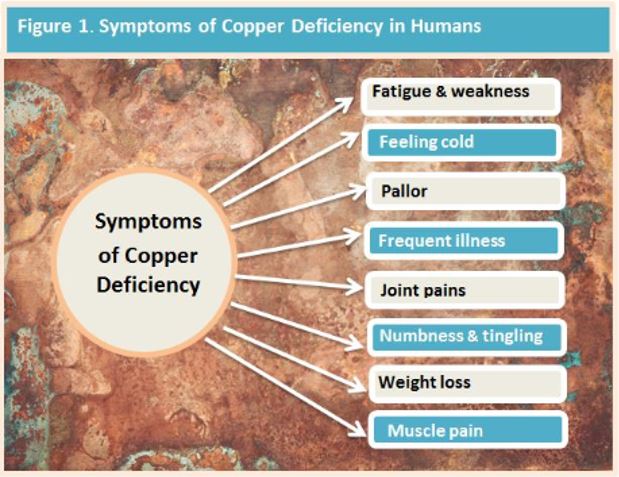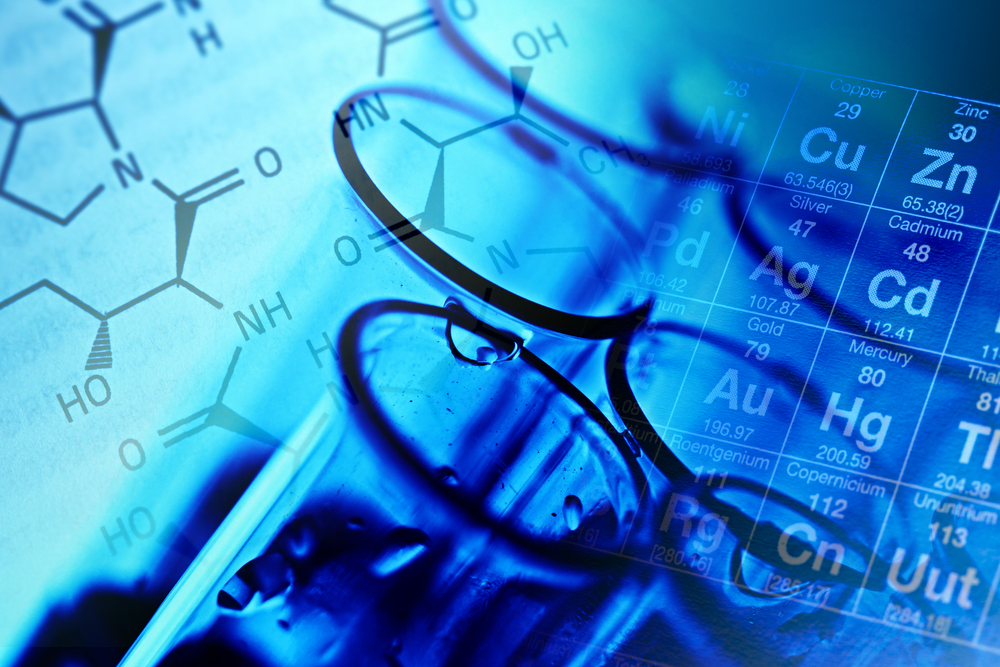Nutrients and Herbs Supporting Immune System Health Against Viruses
InterClinical eNews March 2020 Special Edition What is a virus? Viruses vary widely in shape and complexity. They do not contain the chemical machinery needed to carry out chemical reactions for life. Instead a virus carries only nucleic acid, with a set of genetic instructions, and a coat of protein to protect it. Enveloped viruses have an extra surrounding covering made of a lipid membrane. A virus must have a host...
Copper Deficiency & Excess – Mastering Minerals 10 Masterful Facts
InterClinical eNews March 2020, Issue 102 Characteristics of CopperFactors Affecting Cu Homeostasis ScurvyLiver FunctionGenetic DisordersHigh Zinc Intake: Zn/Cu RelationshipCeruloplasmin and Citrate used in supplementsCopper Anemia Potassium Deficiency and CuCopper and dietBioavailabilityDetermining Cu statusConclusion REFERENCES Characteristics of Copper Copper is an essential micronutrient. The human body contains approximately 100 mg. It is a co-factor for many redox enzymes with ceruloplasmin being the most abundant Cu-dependent ferroxidase enzyme (with an important role in iron metabolism)....
Manganese – Mastering Minerals Series 1
InterClinical eNews February 2020, Issue 101 In this issue we examine one of the lesser known nutrients, Manganese. Although this is a trace element and is needed by the body in very small quantities, it is critical for good health. What is manganese’s role in good health? How do we know when to prescribe it? ‘A well-known professional basketball player was a devout vegetarian. He felt he performed better if he kept...
Reclaim Your Vitality with Carotenoids
InterClinical eNews January 2020, Issue 100 There are at least 600 known natural carotenoids but only those possessing a 3-hydroxy-epsilon end group have vitamin A activity. Beta carotene is a part of that group. Beta-carotene is the precursor of vitamin A - an essential vitamin for retinal function and mucosal protection in the body. Beta carotene also provides significant antioxidant support to the skin and the eyes where it is able...
Metalloestrogens – the Stealth Toxins
Stealth toxins that can play havoc with your hormones.InterClinical eNews December 2019, Issue 99 Metalloestrogens - Factors influencing Susceptibility Several metals can act as metalloestogens by binding to the oestrogenic receptor alpha and initiating cellular changes. However, not everyone exposed to toxic metals develops symptoms. (1) Some factors which affect the likelihood of developing symptoms include: Timing and duration of exposure - This appears critical. For example in hypogonadal males, correcting the hormone...
A Fresh Look at Vitamin E – What You Need to Know about Isomers and Synergists
InterClinical eNews November 2019, Issue 98 Vitamin E is an essential fat-soluble vitamin first discovered in 1922. It is an important antioxidant involved in cellular protection from free radical damage, immune regulation, endothelial cellular integrity, blood viscosity maintenance and wound healing. In this issue we take a look at the eight isoforms discovered so far, how vitamin E needs selenium and glutathione to provide antioxidant support, its gene interactions, its properties and...
Hidden Heavy Metal Toxicity?
Hair Tissue Mineral AnalysisInterClinical eNews October 2019, Issue 97 Heavy metals are so ubiquitous in our environment that everyone is exposed to them. They cannot be avoided completely and are found in virtually everyone to some degree. Sources of heavy metals range from environmental, occupational, household (including foods, water, paints, cosmetics, etc), medical and hobbies. Heavy metals can enter the body through inhalation, intestinal absorption as well as be absorbed through the...
Ferrous Bisglycinate – The Gentle Iron
InterClinical eNews August 2019, Issue 95 Iron deficiency anaemia affects a significant portion of the Australian population and in this issue, we explore the properties of ferrous bisglycinate (Ferrochel®), a patented iron amino acid chelate which has an admirable track record. (1) Those at higher risk of developing a deficiency include children and teenagers; pregnant, breast feeding or menstruating females; vegans and vegetarians and endurance athletes. Whilst dietary intake is important to help...
True Cinnamon and Cassia – Exploring Their Anti-diabetic Properties
InterClinical eNews June 2019, Issue 93 Cinnamon has a long history of domestic and medicinal use going back several hundred years. It is has been used in Ayurvedic and Traditional Chinese medicine since ancient times and has recently received researchers attention due to its extensive range of medicinal properties such as anti-diabetic, antimicrobial, antiviral, antioxidant, gastro-protective and cholesterol lowering properties. (1) Of the approximately 250 species in the genera, the bark of...
Zinc Puts Out the Fire in Chronic Infections
InterClinical eNews January 2019, Issue 88 (Updated 2024) In this month's issue, we take a look at new research on the role of zinc in moderating the immune system's response to chronic infections. Australian researchers wanted to know what moderates the activity of pro-inflammatory interferon IFN-L3. To better understand the regulation of pro-inflammatory interferon IFN-L3 in acute and chronic disease, researchers at the University of Sydney and Westmead Hospital developed an in vivo / in vitro model to examine a range of potential inducers and inhibitors...





